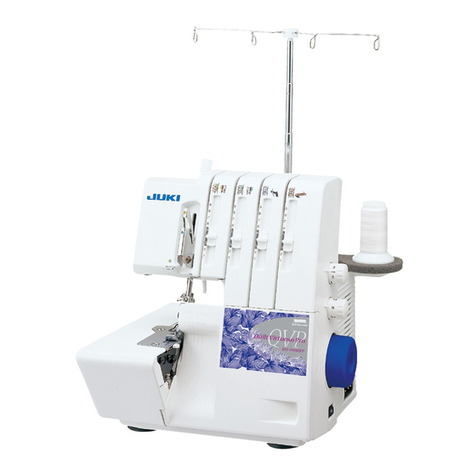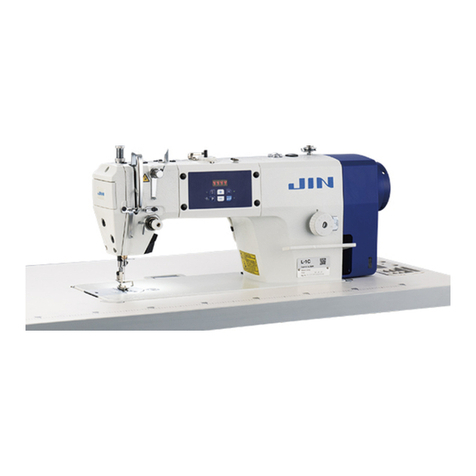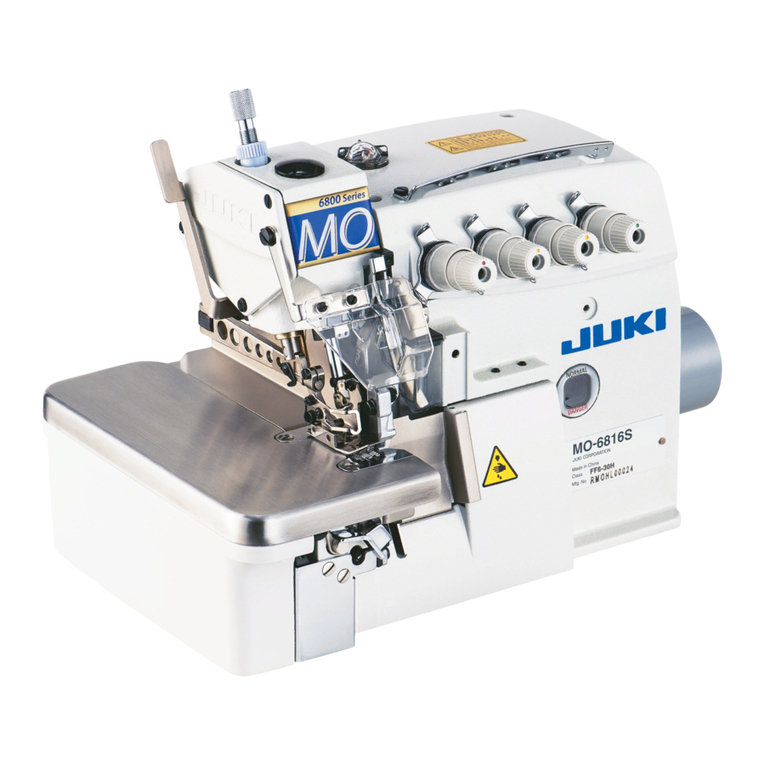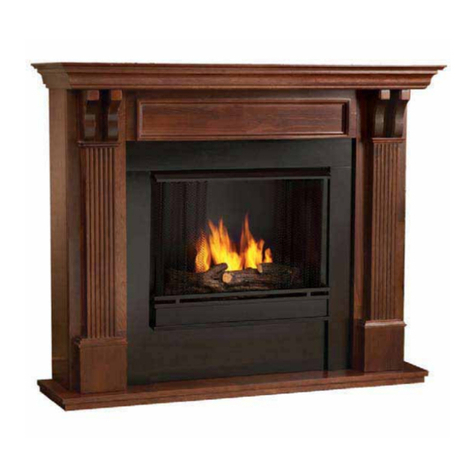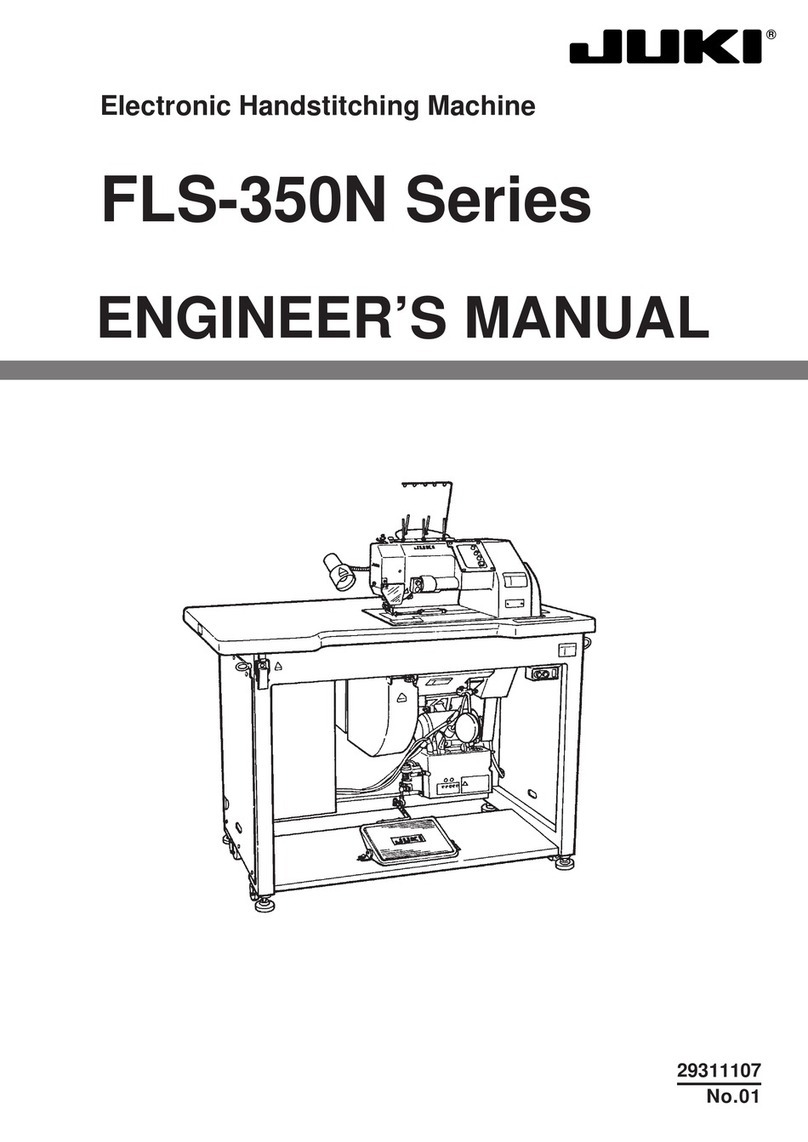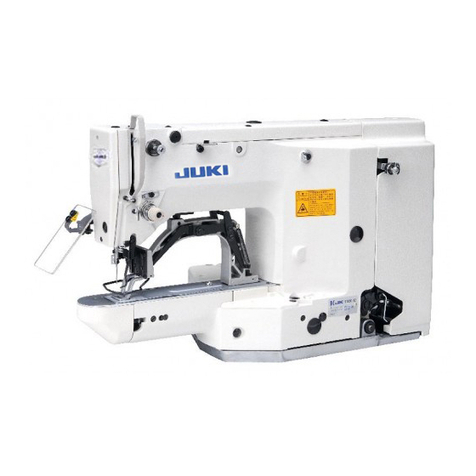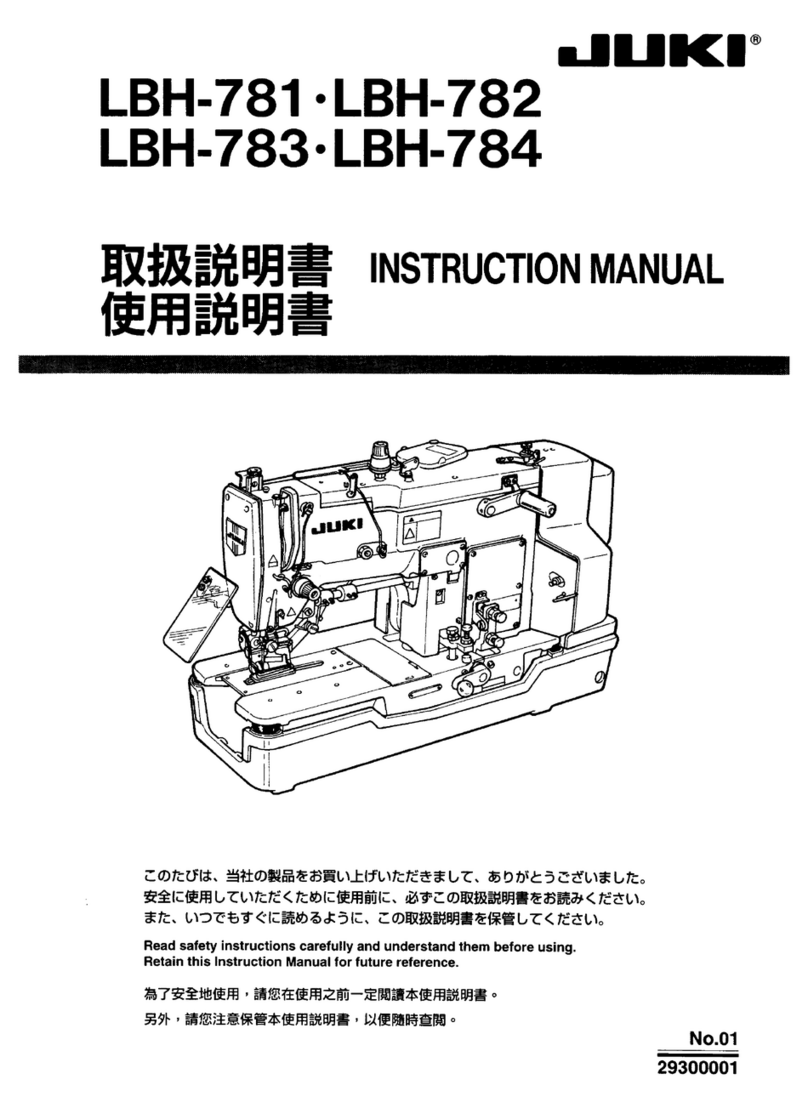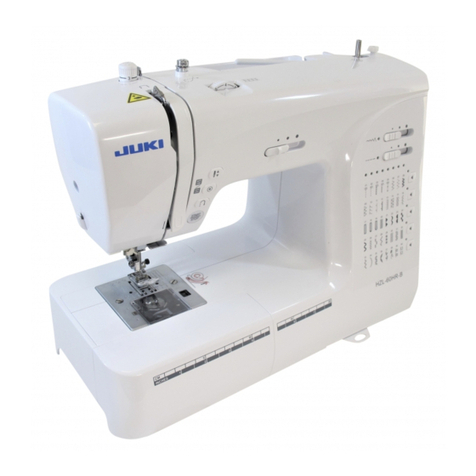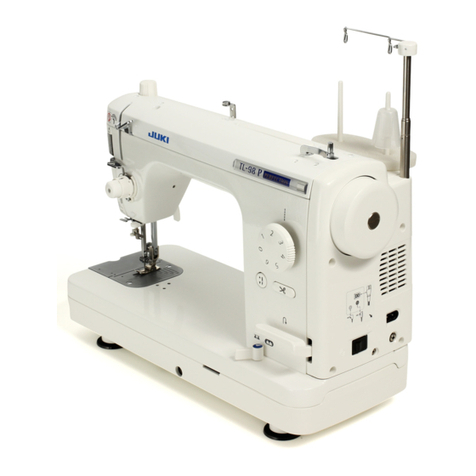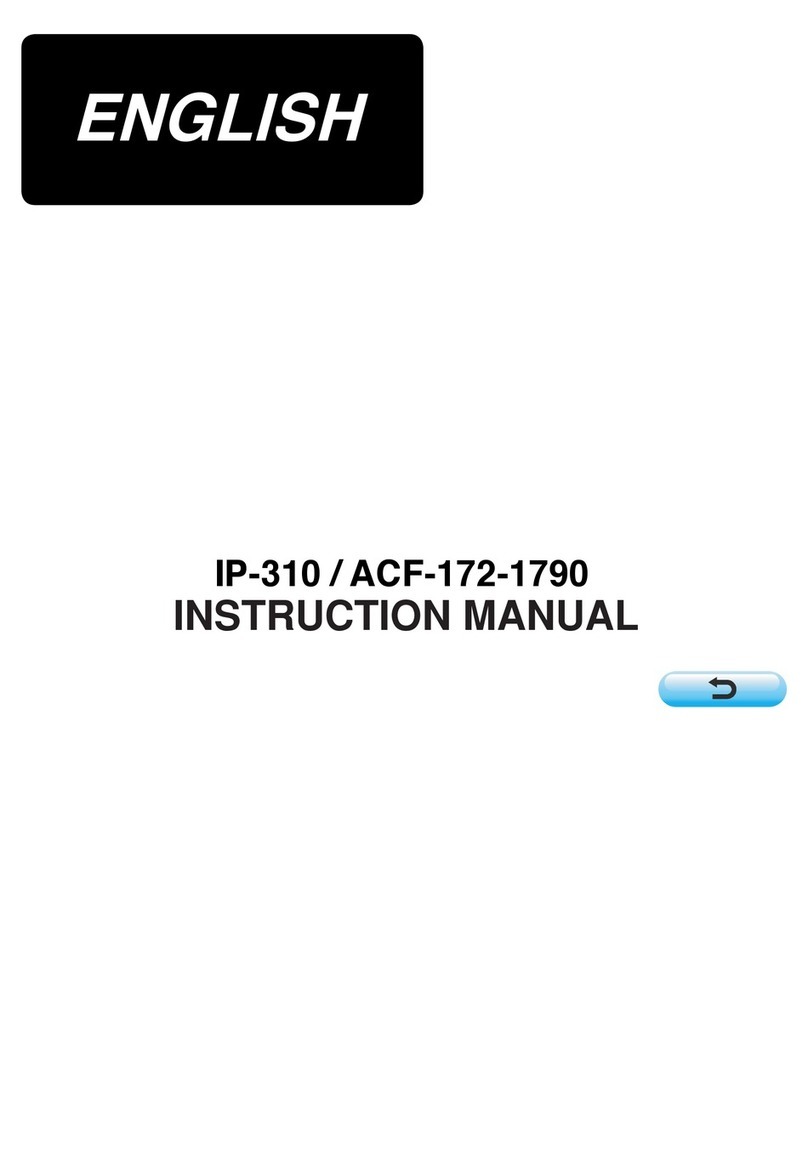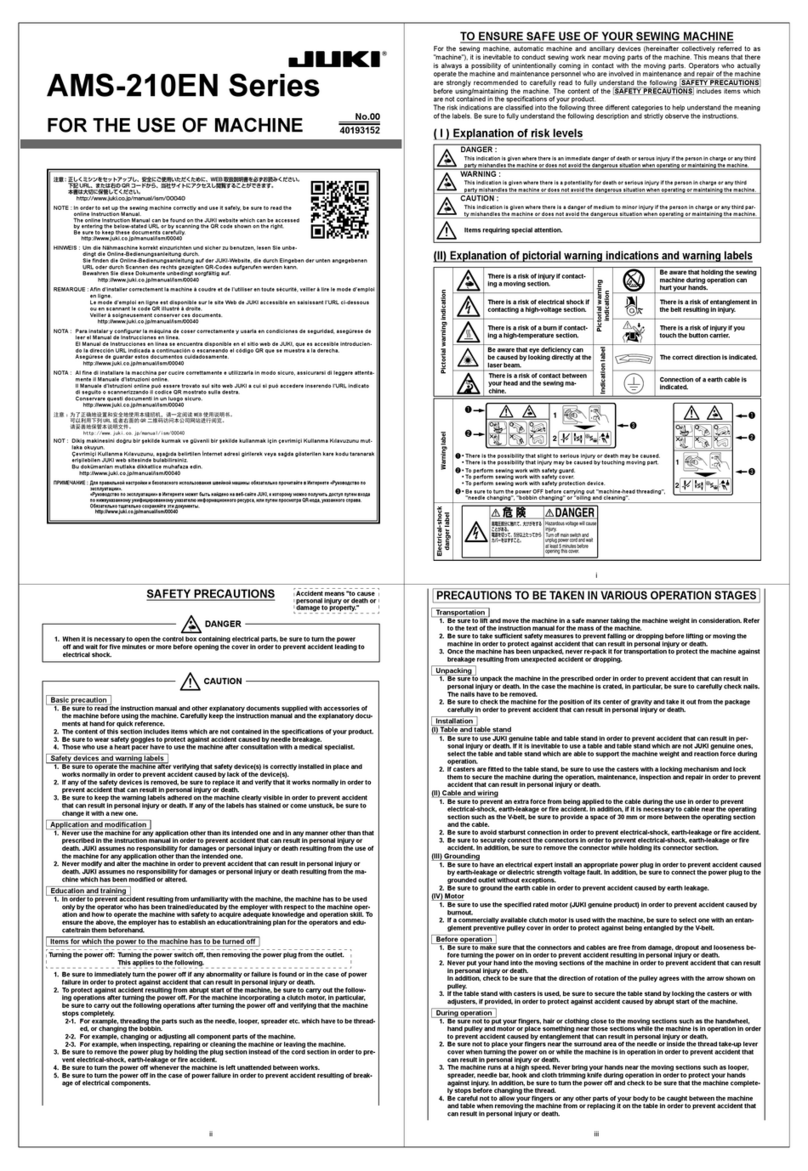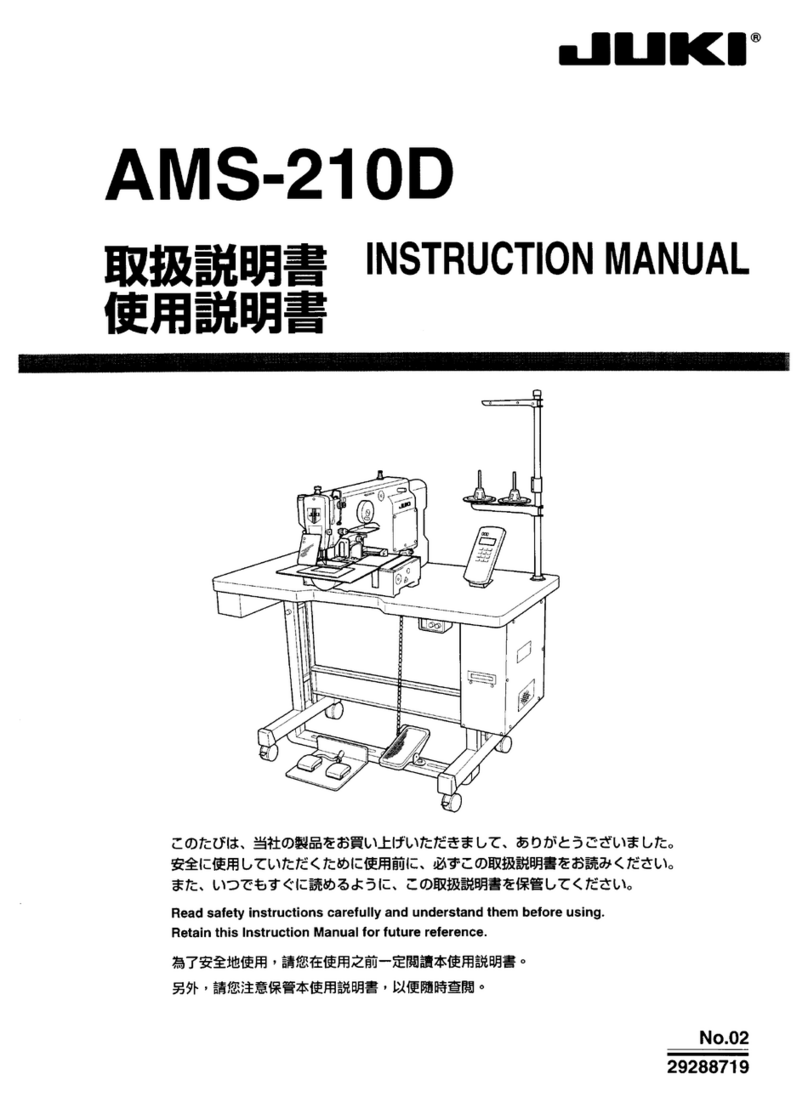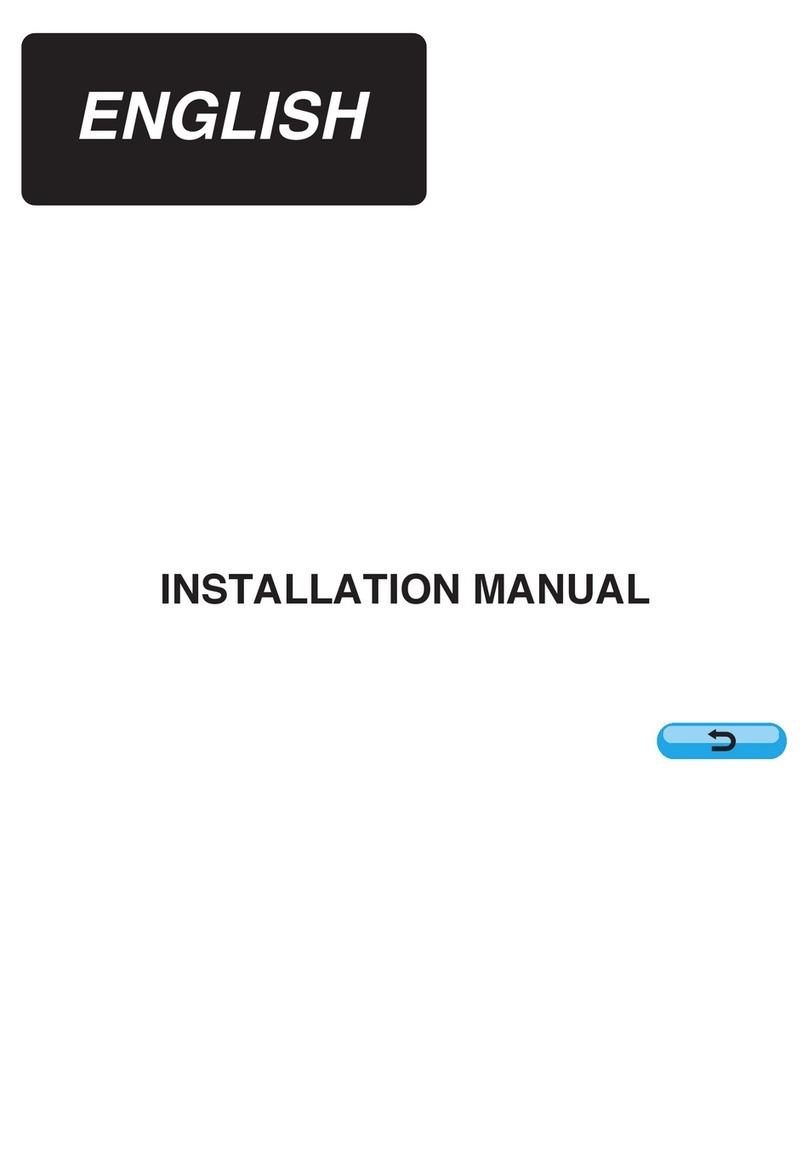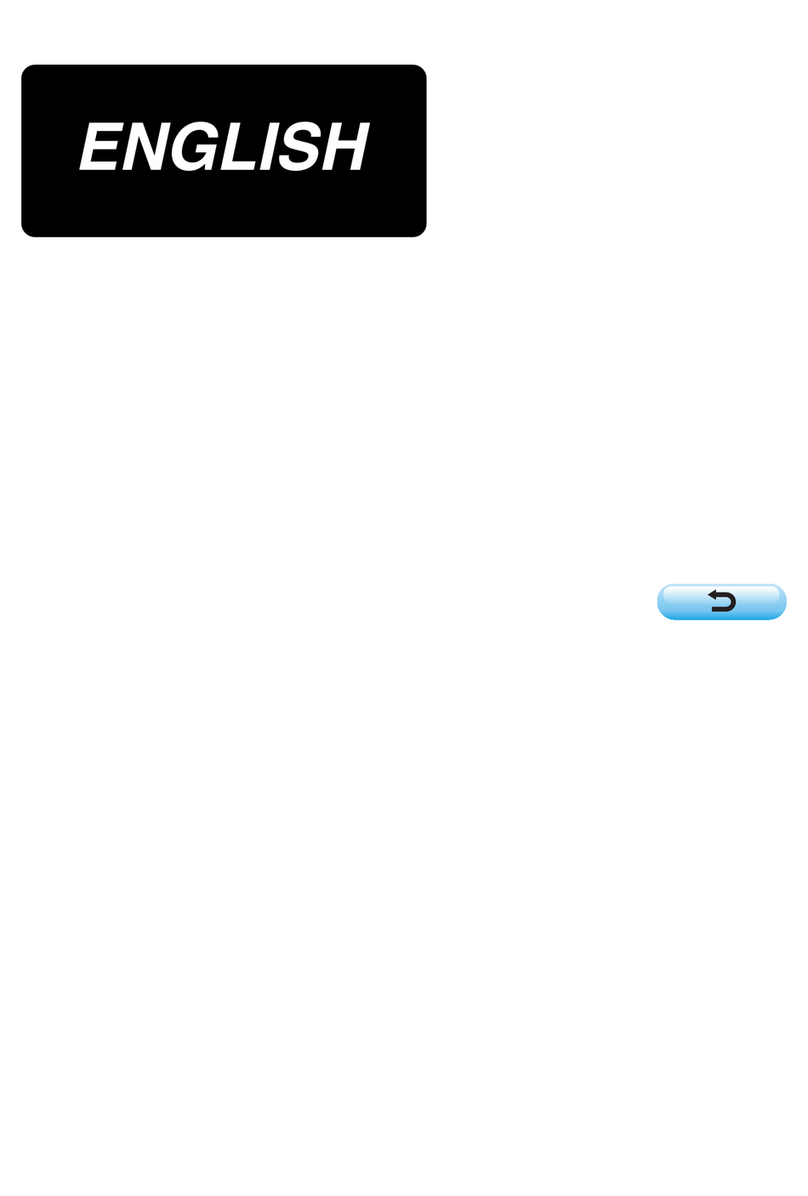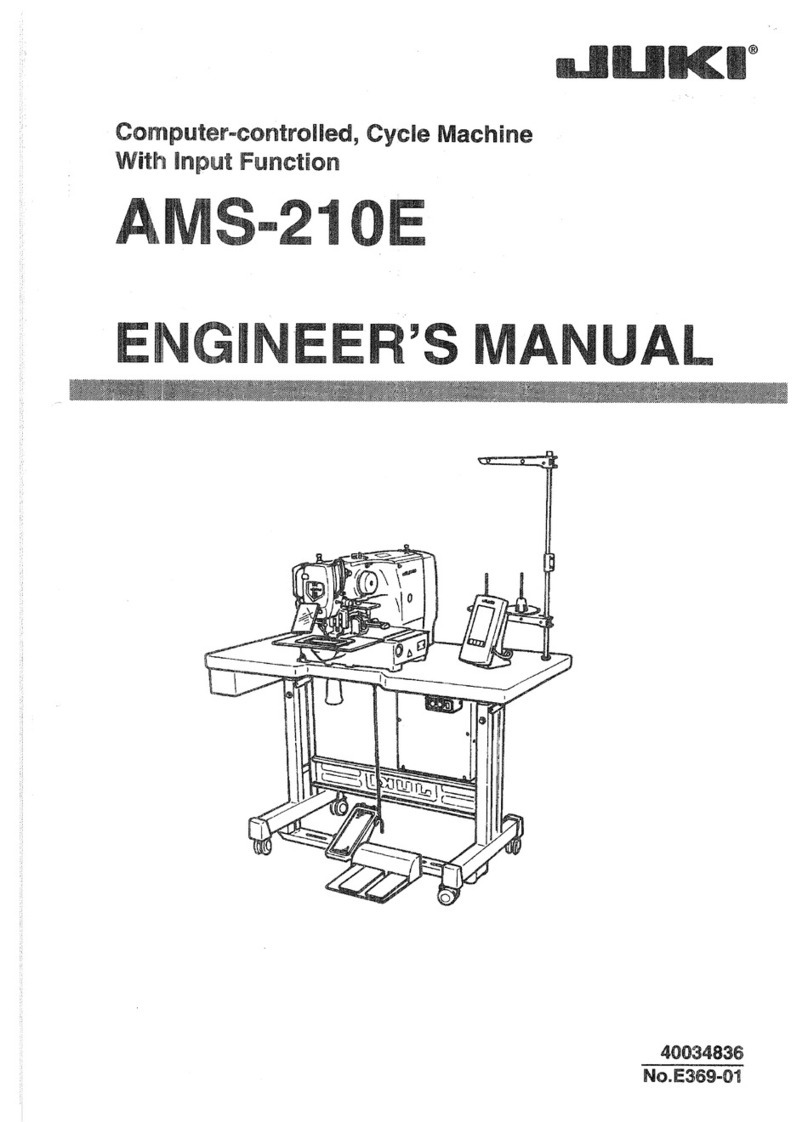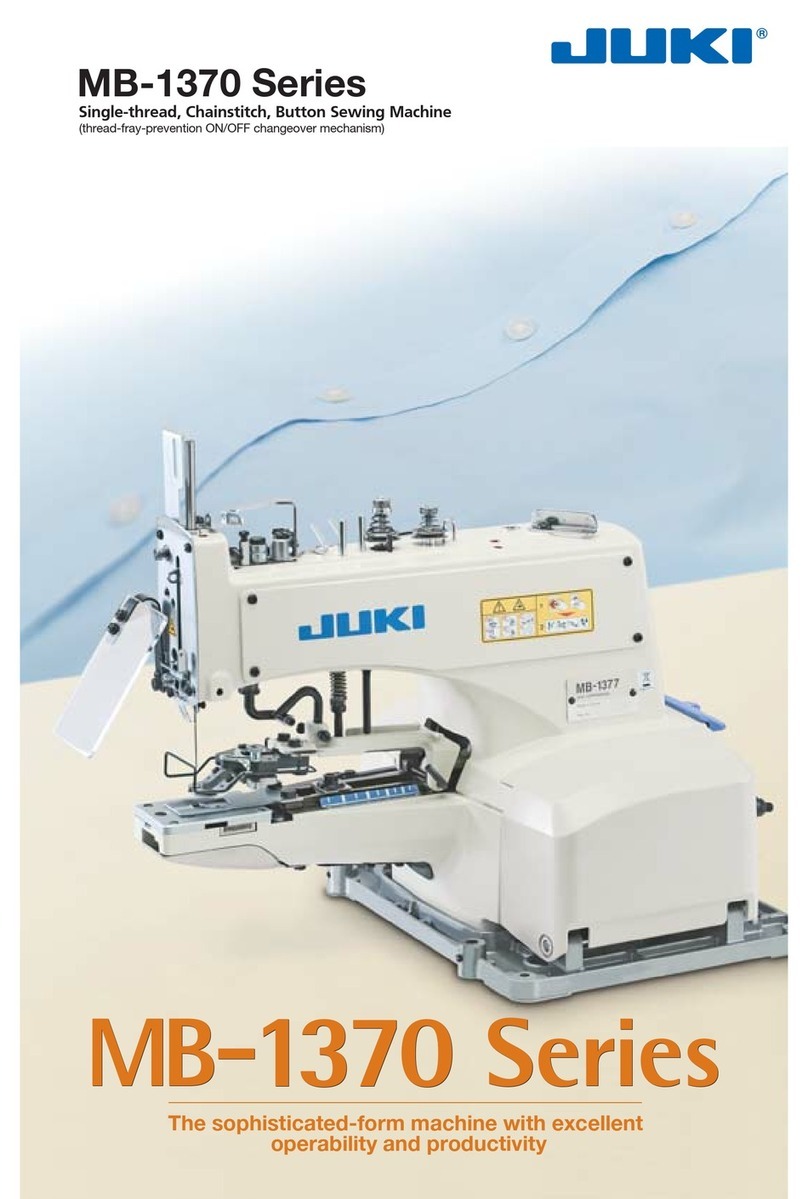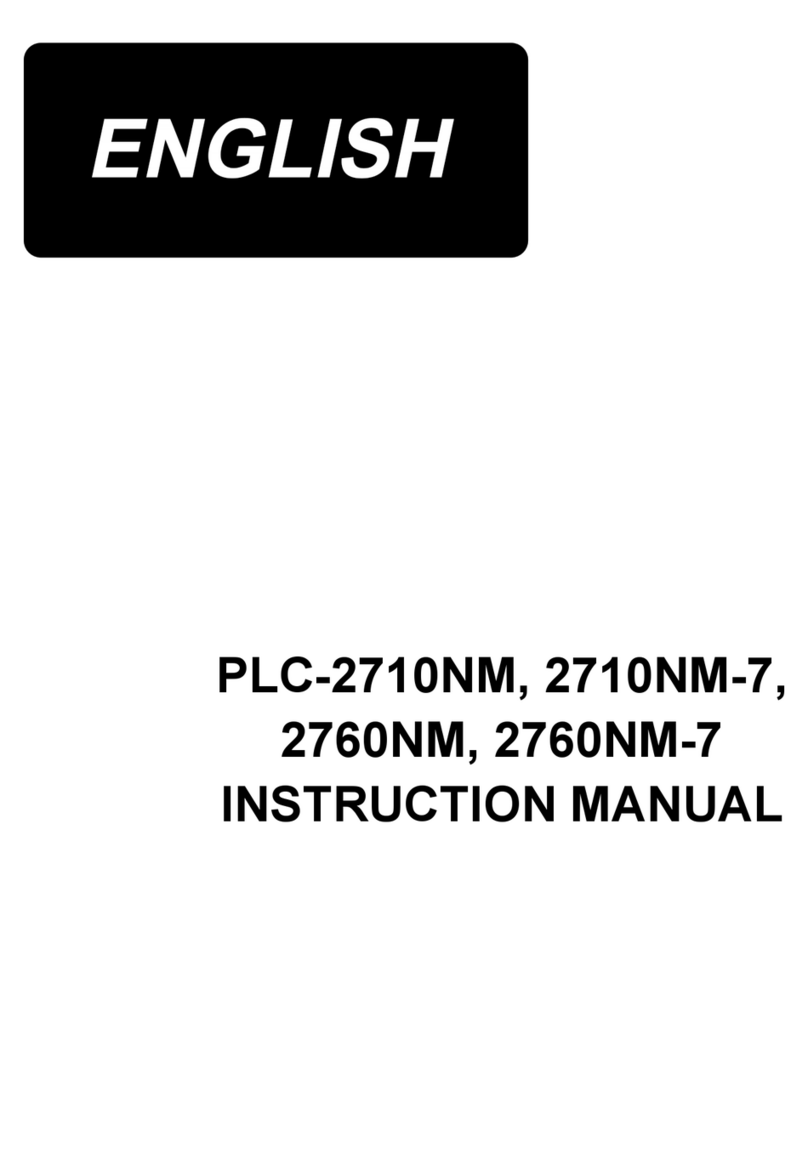5
CONTENTS / TABLE DES MATIERES
Importantsafeguards························································1
Principalparts····································································7,8
Accessories········································································9
Majorfunctions····························································10-13
Windingthebobbin···················································14-16
Placing bobbin in the case
Threadingthemachine·············································17-19
Automatic needle threader
Pulling up the bobbin thread
Changingthepresserfoot···············································20
Attachingtheneedle·························································21
Types of feet and their application ································ 22
How toadjustthreadtension··········································23
Fabric,thread andneedle table ·····································24
Howtoadjuststitchlength(manually)·························26,27
Straightstitch·································································28,29
Straight stitch on strechy fabric
Automaticlockstitch ·················································30-33
Manual lock stitch and sewing start on heavy fabric
Zigzagstitch·······································································34
How to adjust stitch width (manually) ····························35
Overcasting·········································································36
Reinforcedstretchstitch···················································37
Automaticbuttonholes···············································38-41
Bartacking·····································································42,43
Quiltingstitch······································································44
Patchwork··········································································45
Insertingzippers·························································46-49
Lapped insertion
Centered insertion
Blindstitch······································································50,51
Quiltingattachment····························································52
Optionalparts·····························································53-60
Invisible zipper foot / Manual buttonhole foot
Rolled hemming foot / Even feed foot
Smooth foot
Replacinglamp··································································61
Maintenance(Cleaning)···················································62
Performancechecklist ·····················································63
Specificationtable·····························································63
CONTENTS
TABLE DES MATIERES
Mise engarde ···································································2
Principauxéléments·························································7,8
Accessoires········································································9
Fonctionsprincipales················································10-13
Embobinage·······························································14-16
Placer la canette dans le boîtier
Enfilage········································································17-19
Enfileur automatique
Remonter le fil de canette
Changementdepiedpresseur······································20
Mise en place de l’aiguille ··············································21
Types de pieds et spplications ······································22
Réglage de la tension de fil ···········································23
Tableau des tissus, fils et aiguilles ································ 24
Réglagedelalongueurdupoint(manuel)················26,27
Pointdroit·······································································28,29
Point droit sur tissu extensible
Pointd’arrêtautomatique·········································30-33
Point d’arrêt manuel et départ de la couture sur les
tissu épais
Pointzig-zag·······································································34
Commentrégler lalargeur despoints(manuellement) ···35
Surfilage··············································································36
Pointextensiblederenfort···············································37
Boutonnièresautomatiques·····································38-41
Coutured’arrêt·····························································42,43
Pointdecourtepointe·······················································44
Patchwork···········································································45
Insertion de fermeture à glissière ··························· 46-49
Insertion latérale
Insertion centrale
Ourletinvisible·······························································50,51
Ensemblepourquilting·····················································52
Piècesoptionnelles···················································53-60
Pied fermeture invisible
Pied boutonnière manuelle
Pied ourlet roulé / Pied double entraînement
Pied à semelle lisse
Remplacementdel’ampoule··········································61
Maintenance(nettoyage)·················································62
Problèmeséventuelset remèdes simples ···················· 64
Tableaudecaractéristiques·············································64
